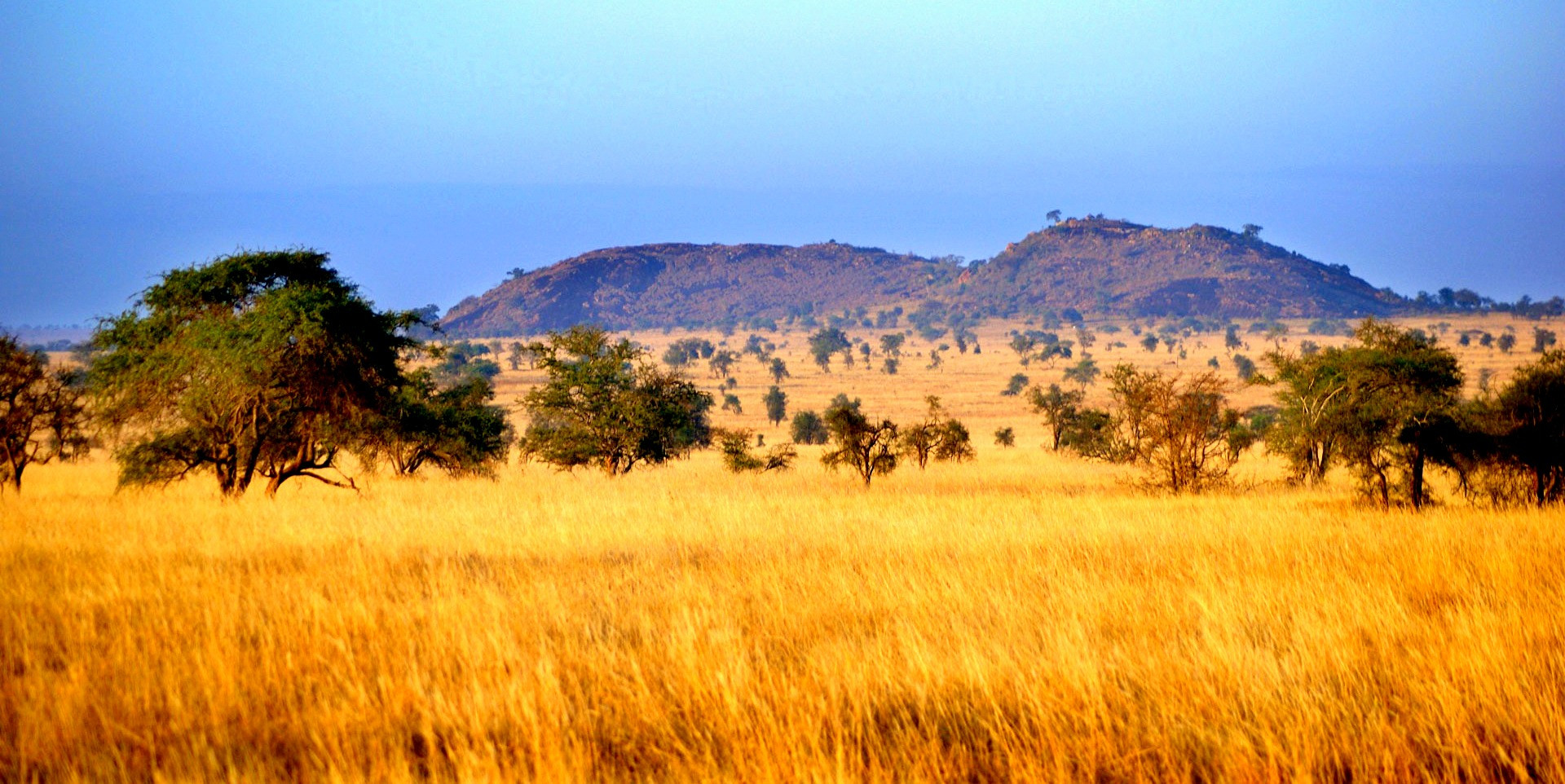Maasai Mara Wildlife Safari
A Maasai Mara Wildlife Safari is undoubtedly one of the most spectacular and sought-after experiences when visiting Kenya. Renowned for its exceptional populations of lions, leopards, cheetahs, and elephants, the Maasai Mara National Reserve is a haven for wildlife enthusiasts and photographers alike.
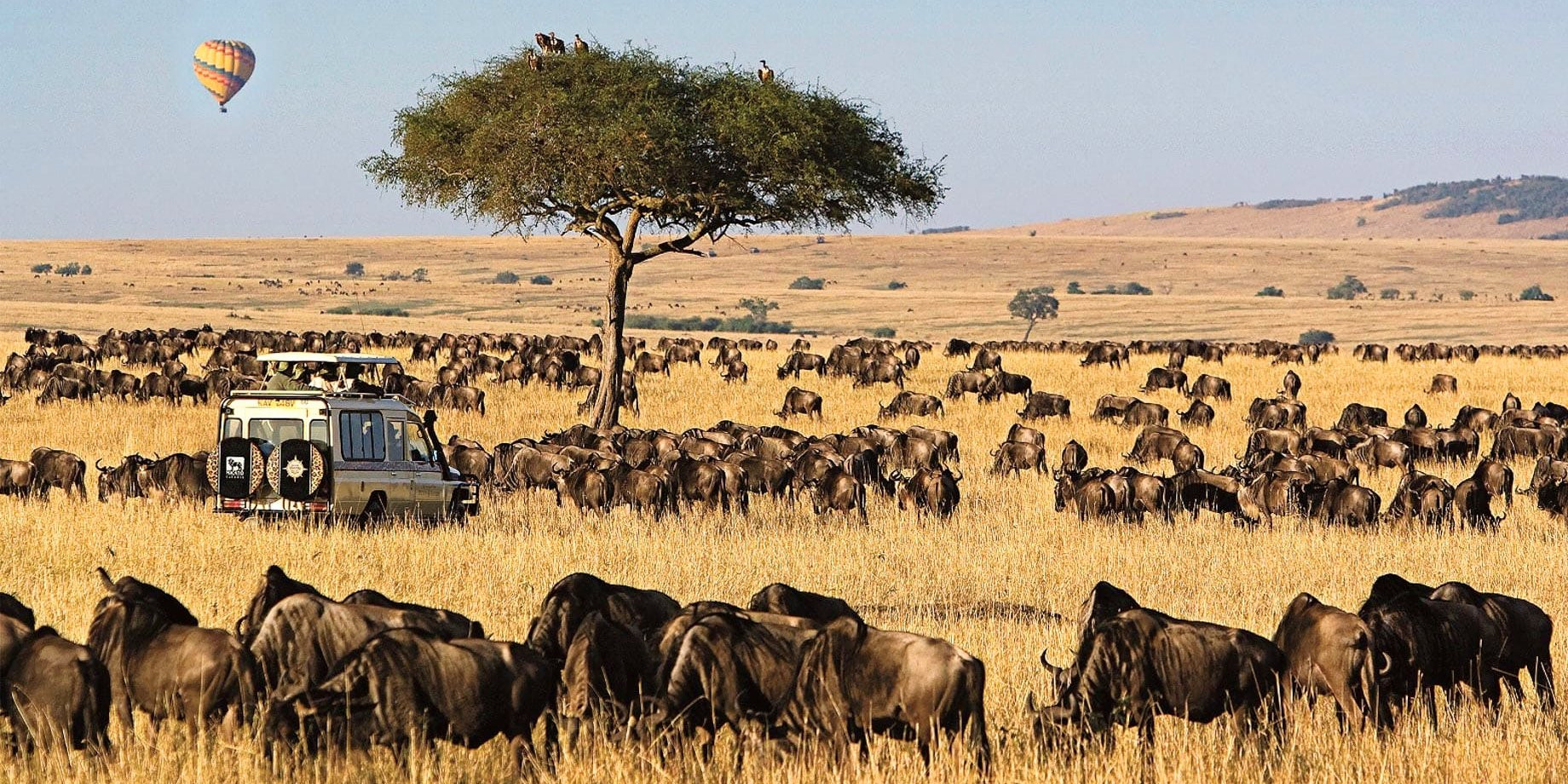
-
Unique Aspects of the Maasai Mara: The reserve is perhaps best known for the Great Migration, an annual event where millions of wildebeest, zebra, and gazelles traverse its plains in a large loop from the Serengeti in Tanzania, usually between July and October. This natural spectacle is considered one of the "Seven New Wonders of the World" and offers dramatic river crossings, predator-prey interactions, and a dynamic ecosystem in flux.
-
Wildlife and Ecosystems: Aside from the migration, the Maasai Mara provides year-round opportunities to witness a rich diversity of wildlife in their natural habitat. The reserve's sprawling grasslands, dotted with acacia trees, are home to a high concentration of game, including the Big Five (lion, leopard, rhinoceros, elephant, and Cape buffalo). The Mara River, filled with hippos and crocodiles, adds to the dramatic wildlife encounters available.
-
Safari Experiences: Safaris in the Maasai Mara can be experienced in various forms, including game drives in 4x4 vehicles, walking safaris guided by expert Maasai guides, and hot air balloon safaris that offer an aerial view of the vast landscape at sunrise. Each mode of exploration offers a different perspective and appreciation of the reserve's natural beauty and ecological complexity.
-
Cultural Interactions: In addition to wildlife, visitors have the opportunity to engage with the local Maasai communities. These interactions provide insight into the Maasai's deeply rooted culture, traditions, and way of life, which are closely tied to the surrounding environment. Cultural visits can include village tours, traditional dance performances, and storytelling sessions, enhancing the safari experience with a human connection.
-
Conservation Efforts: The Maasai Mara is also a center for conservation efforts, where various organizations work to protect the biodiversity and promote sustainable tourism practices. These initiatives help ensure that the ecosystem remains vibrant for future generations and that the benefits of tourism also support local communities.
Maasai Mara Wildlife Safari is more than just a trip; it's an immersive journey into one of the world's most vibrant ecosystems, offering unforgettable encounters with nature and a profound appreciation for wildlife conservation and cultural heritage. Whether you're a first-time visitor or a returning enthusiast, the Maasai Mara promises a new adventure with each safari.
Amboseli National Park Elephants
Amboseli National Park is renowned for offering some of the most spectacular views of Mount Kilimanjaro and for its impressive populations of African elephants. Located in the southern part of Kenya, this park provides a pristine backdrop for one of the most intimate wildlife experiences imaginable.
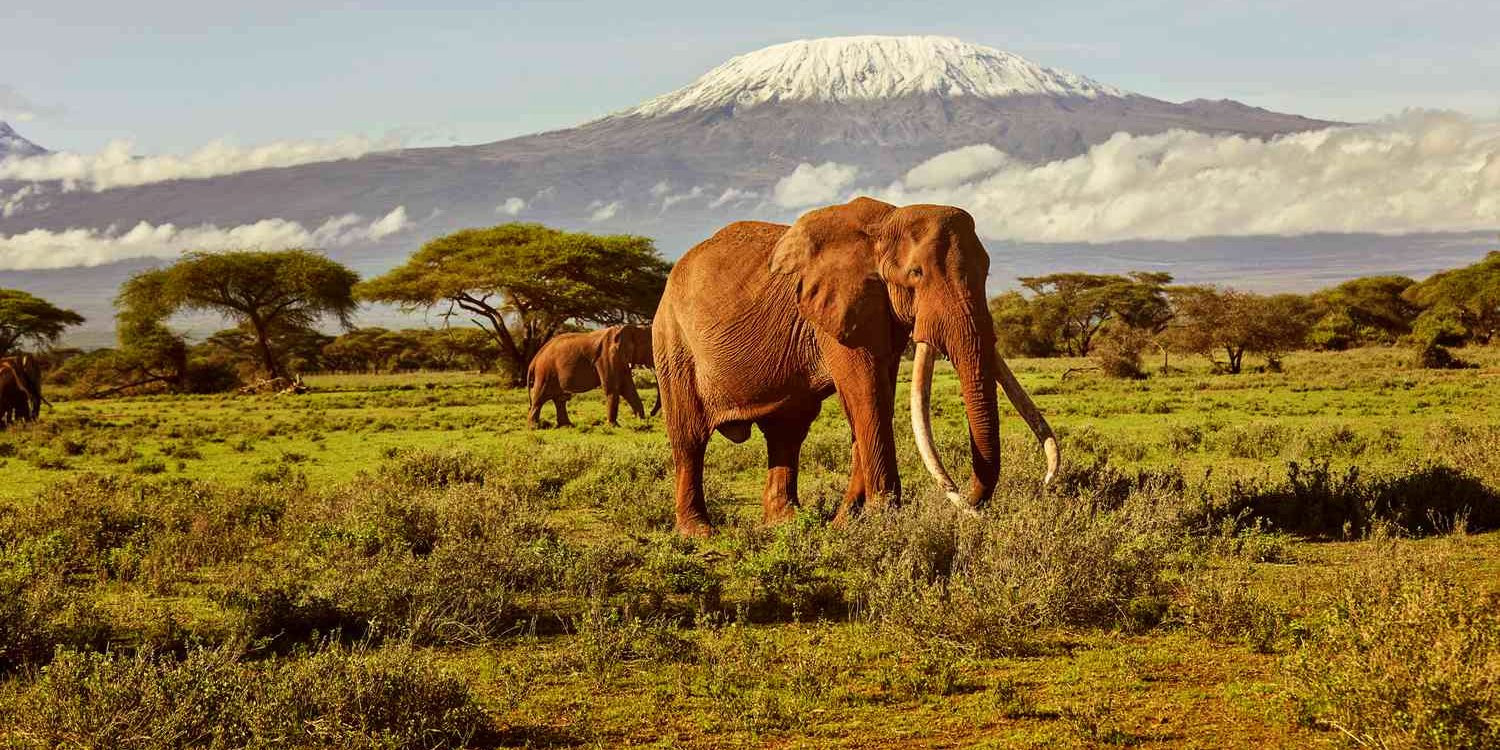
-
The Elephants of Amboseli: Amboseli is home to one of the largest elephant populations in Africa, which has been the subject of extensive research over several decades, particularly by Cynthia Moss and the Amboseli Elephant Research Project. Visitors to Amboseli are treated to up-close encounters with these majestic creatures, observing their complex social behaviors and family dynamics.
-
Wildlife and Scenic Landscapes: While elephants are the stars of Amboseli, the park also hosts a variety of other wildlife, including zebras, wildebeests, giraffes, lions, and over 400 species of birds. The park's diverse habitats, from wetlands to savannah and woodland, make it a rich area for biodiversity The park is characterized by its dry, open plains, which provide clear views of the animals against the dramatic backdrop of Mount Kilimanjaro, Africa's highest peak. This setting not only enhances the wildlife viewing experience but also offers some of the most photogenic safari scenes in the world.
-
Safari Experiences: Visitors can explore Amboseli through several types of safaris. Game drives at different times of the day, including at dawn and dusk, allow for varied wildlife sightings as the animals are most active during the cooler hours. Night drives are also an option for spotting nocturnal creatures and experiencing a different side of the park. For those looking for a more immersive experience, guided walks and cultural visits with the Maasai people offer insights into the local ecology and the traditional lifestyles that have harmonized with nature for centuries.
-
Conservation and Community: Conservation efforts in Amboseli are crucial and are often conducted in partnership with the local Maasai communities. These initiatives focus on sustainable tourism that benefits wildlife conservation and the local people. Through community-driven conservation strategies, Amboseli aims to preserve its natural heritage while providing economic benefits to its indigenous residents.
Visiting Amboseli National Park provides more than just a safari experience; it offers a profound connection with nature and an understanding of the ecological and cultural importance of preserving such unique environments. The elephants of Amboseli, with their grace and grandeur, are emblematic of the park's commitment to wildlife conservation and are a must-see for any wildlife enthusiast.
Climbing Mount Kenya
Climbing Mount Kenya offers an exhilarating and rewarding adventure for trekkers and climbers alike. As the second highest peak in Africa, following Mount Kilimanjaro, Mount Kenya provides stunning scenery, diverse habitats, and a challenging ascent that attracts adventure enthusiasts from around the world.
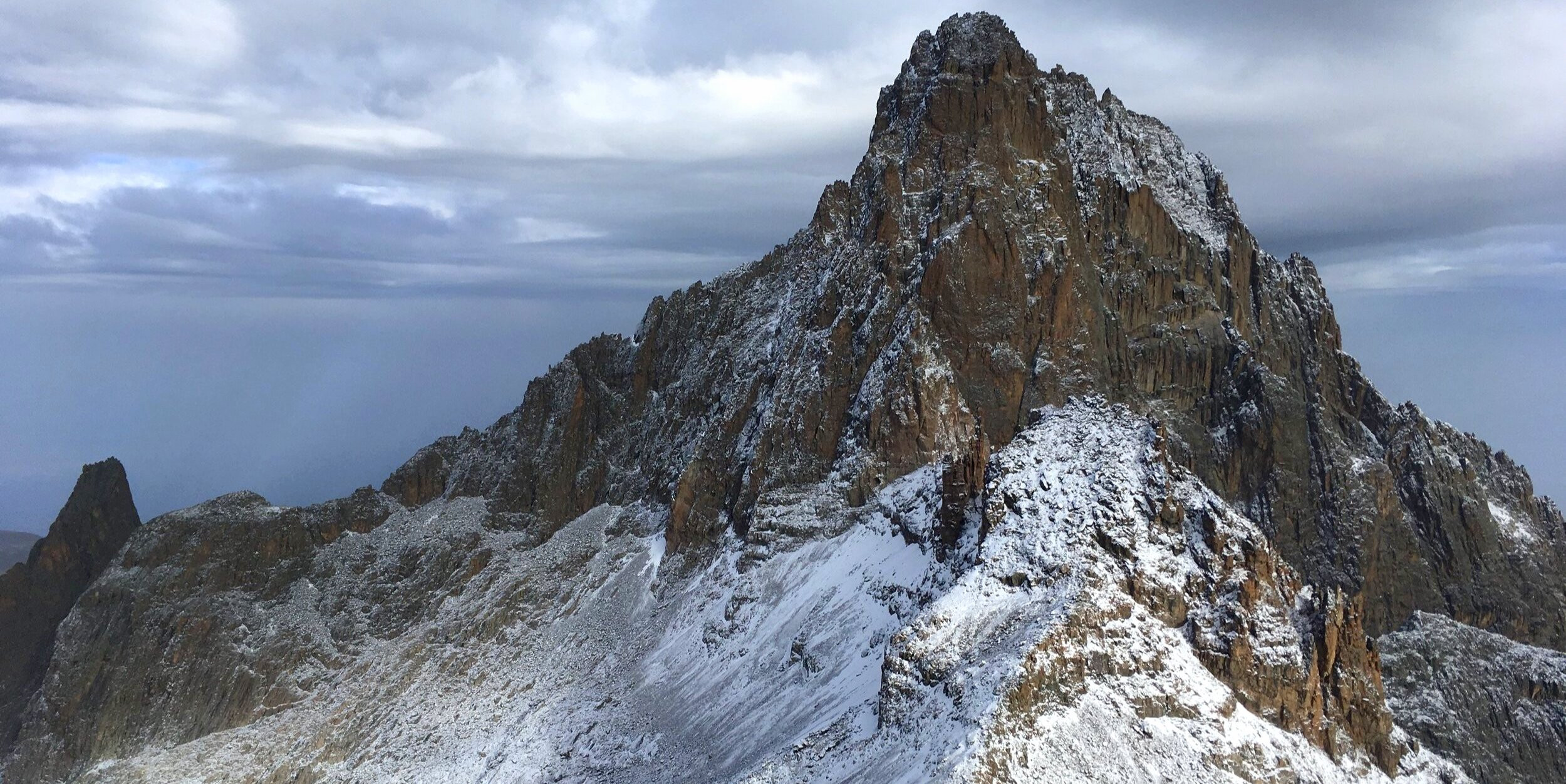
Unique Features of Mount Kenya: Mount Kenya is an ancient stratovolcano, primarily composed of lava flows and pyroclastic material. It features a series of peaks, with Batian (5,199 meters or 17,057 feet) being the highest, followed by Nelion (5,188 meters or 17,021 feet) and Point Lenana (4,985 meters or 16,355 feet). Point Lenana is the most accessible of the three major peaks and is a popular target for trekking groups.
Climbing Routes
There are several routes for climbing Mount Kenya, each offering different levels of difficulty and scenic beauty:
-
Sirimon Route: This is the least steep and arguably the most scenic route, making it a popular choice for those who prefer a more gradual ascent.
-
Chogoria Route: Known for its spectacular scenery, this route is often described as the most picturesque, featuring high-altitude lakes, dense forests, and dramatic gorges.
-
Naro Moru Route: This is the fastest route to Point Lenana but also the steepest, featuring the challenging vertical bog section.
Wildlife and Ecology: As climbers ascend Mount Kenya, they traverse different ecological zones, from dense mountain forests inhabited by elephants and buffalo, to high-altitude moorlands dotted with unique flora like giant lobelias and groundsel. The diversity of the park’s ecosystems makes the climb not only a physical challenge but also a fascinating ecological journey.
Climbing Experience: Climbing Mount Kenya is less commercialized than Kilimanjaro, offering a more solitary and rugged experience. The trek to the summit requires good physical fitness and proper acclimatization to handle the high altitudes. Climbers can choose to summit via technical climbs on Batian and Nelion for a more challenging adventure, or trek to Point Lenana, which does not require technical climbing skills but still provides a rewarding summit experience.
Conservation Efforts: Mount Kenya is a UNESCO World Heritage site and a Biosphere Reserve, reflecting its environmental significance and the conservation efforts to preserve its unique landscapes and biodiversity. Conservation initiatives focus on protecting the mountain’s natural environment while supporting sustainable tourism practices that benefit local communities.
Preparing for the Climb: Prospective climbers should prepare adequately by training physically and gathering appropriate gear. It is also advisable to plan the climb with experienced guides and porters who not only enhance safety but also enrich the journey with their knowledge of the mountain’s history, flora, and fauna.
Climbing Mount Kenya is more than just a physical challenge; it is a journey through a rich tapestry of biological diversity and stunning landscapes. Whether you seek the thrill of reaching a high summit or the pleasure of immersing yourself in nature, Mount Kenya offers an unforgettable adventure.
Relaxing on Diani Beach
Relaxing on Diani Beach epitomizes the ideal tropical getaway with its exquisite white sands, crystal-clear waters, and lush greenery. Located along the Indian Ocean coast of Kenya, Diani Beach is a premier destination for both adventurers and those seeking tranquility. It offers a serene escape with a perfect blend of relaxation and recreational activities in a picturesque setting.
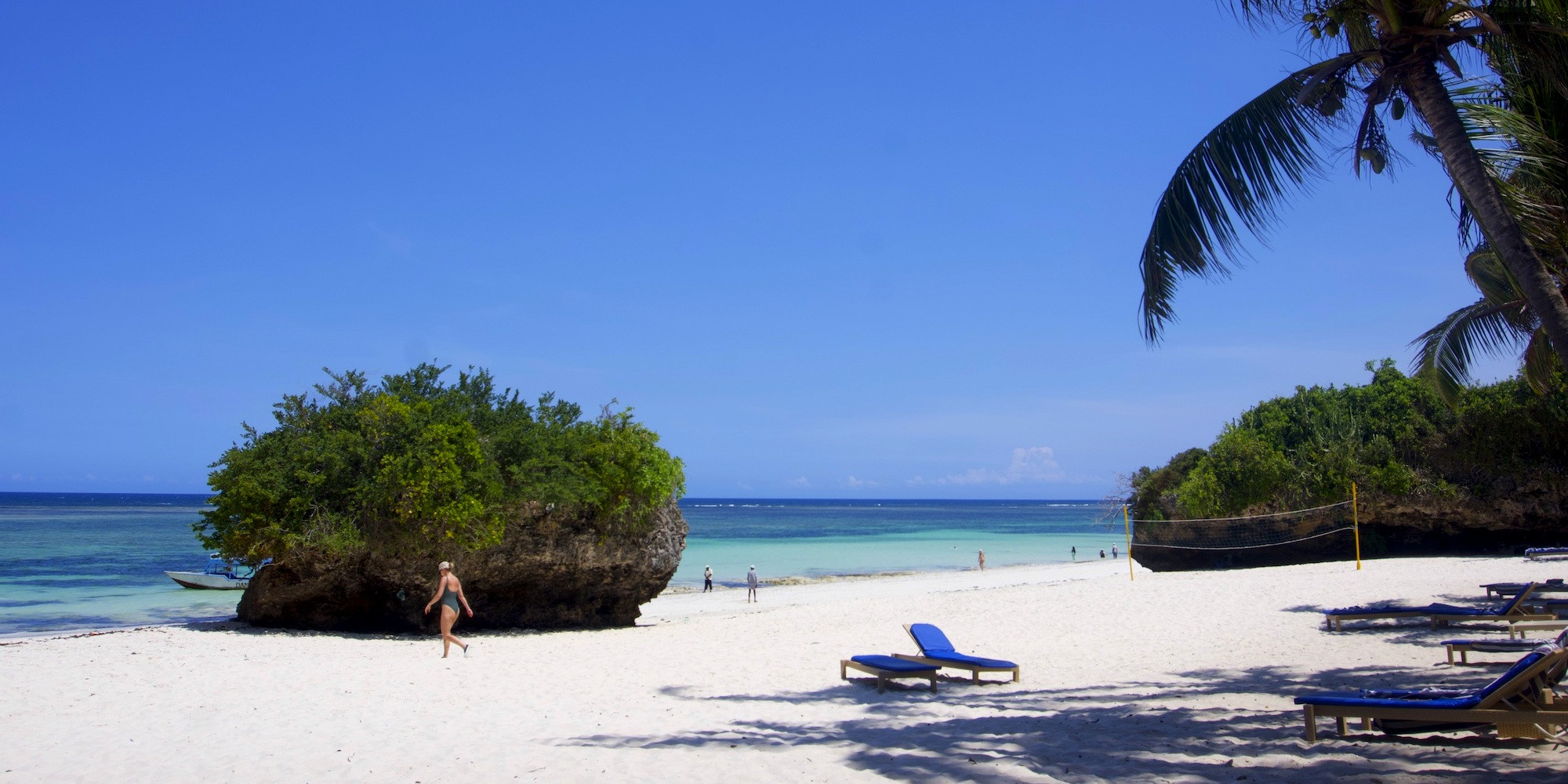
The Allure of Diani Beach: Diani Beach stretches over 17 kilometers and is famed for its soft, powdery white sand fringed by palm trees and the turquoise waters of the Indian Ocean. The protective coral reef creates calm waters close to the shore, ideal for swimming and snorkeling. The reef is a vibrant ecosystem, housing a diverse range of marine life and providing excellent opportunities for diving enthusiasts to explore colorful coral gardens.
Activities and Recreation
While the main allure of Diani Beach is its tranquil environment, the area is also rich with activities for those inclined to more vigorous pursuits:
-
Water Sports: Diani Beach is well-suited for water sports such as kite surfing, jet skiing, and snorkeling. The consistent winds and warm water make it a favorite among kite surfers.
-
Diving: The coral reefs around Diani offer spectacular dive sites for all levels of divers, featuring underwater canyons and fascinating marine life, including turtles, dolphins, and a variety of tropical fish.
-
Dhow Cruises: Taking a traditional dhow cruise is a relaxing way to enjoy the coastal scenery and sunset, often accompanied by dinner and music.
Relaxation and Wellness
For those looking to unwind:
-
Spa Treatments: Many resorts along Diani Beach offer spa services, where guests can enjoy massages and treatments that incorporate local ingredients and techniques.
-
Yoga and Wellness: With its calming environment, Diani Beach is ideal for yoga and wellness retreats. Several resorts offer yoga classes with views of the ocean, providing a peaceful setting to rejuvenate mind, body, and spirit.
Culinary Experiences: Diani Beach also boasts a vibrant culinary scene, with restaurants and beach bars offering a mix of international and local Swahili dishes. Fresh seafood, caught daily, is a staple on menus, providing a taste of the local flavors and culinary traditions.
Accommodations: The accommodations in Diani range from luxury resorts to boutique hotels and beachfront villas, catering to all preferences and budgets. Many of these places emphasize eco-friendly practices and integrate seamlessly with the surrounding landscape, offering an intimate and immersive beach experience.
Local Culture and Community: Visitors to Diani Beach can also explore the local culture through village tours and market visits. Engaging with the community and learning about the coastal Swahili culture adds a meaningful dimension to any visit.
Relaxing on Diani Beach thus offers more than just a typical beach vacation—it’s a comprehensive experience that blends leisure with adventure, wellness, and cultural enrichment. Whether you’re basking in the sun, exploring the ocean, or indulging in local cuisine, Diani Beach promises a memorable and relaxing escape in one of Kenya’s most beautiful locales.
Bird Watching at Lake Nakuru
Bird Watching at Lake Nakuru is an exceptional experience for nature enthusiasts and bird watchers alike. Located in the Rift Valley of Kenya, Lake Nakuru National Park is renowned for its spectacular birdlife, most notably the large flocks of flamingos that color the lake's shores pink. The park's diverse ecosystems support a wide range of bird species, making it one of the premier bird-watching destinations in Africa.
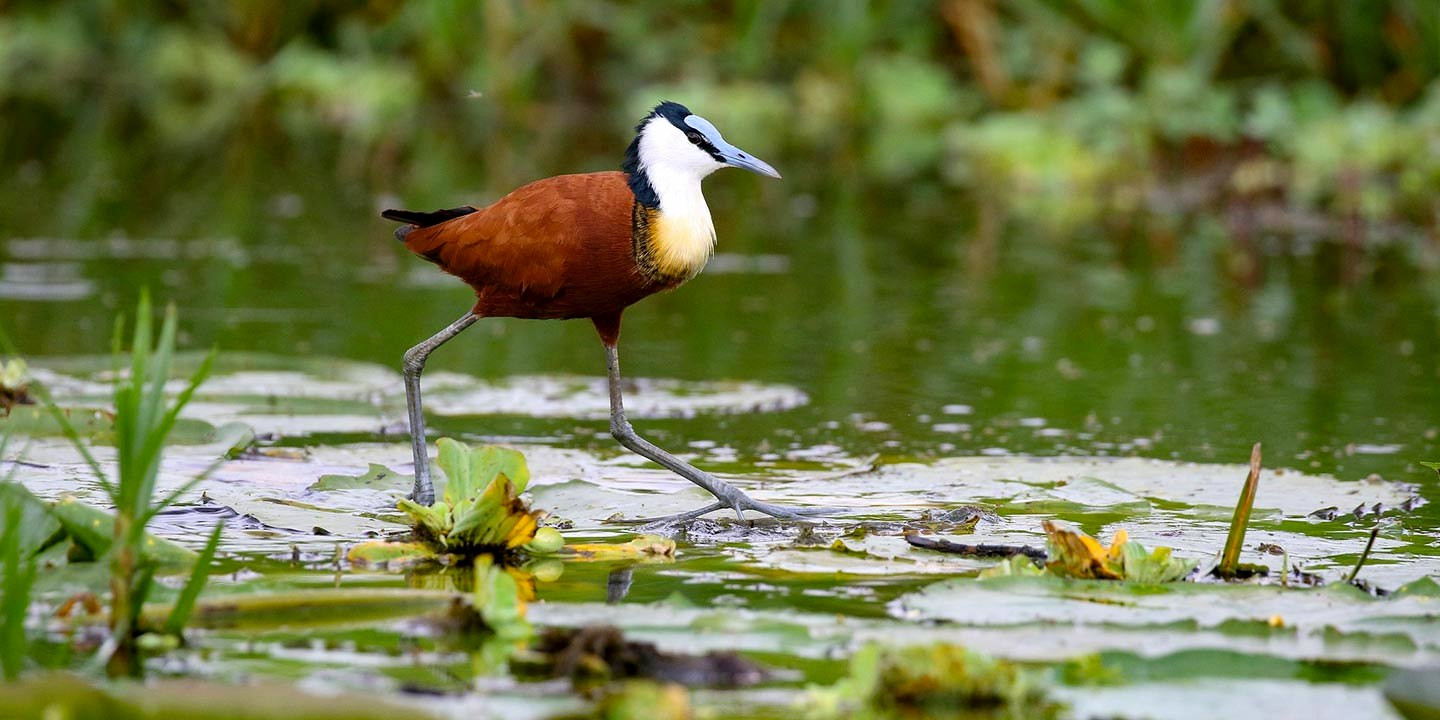
The Spectacle of Lake Nakuru: Lake Nakuru itself is a shallow alkaline lake, which is highly conducive to the growth of algae, attracting vast numbers of flamingos that feed on it. Although the numbers can fluctuate due to environmental conditions, the sight of hundreds of thousands of flamingos lining the shores remains a breathtaking spectacle. The park also hosts over 450 other species of birds, making it a veritable bird watcher's paradise.
Diverse Bird Species
Beyond the iconic flamingos, Lake Nakuru is home to a plethora of bird species, including:
-
Pelicans: These large birds are often seen alongside the flamingos, fishing in the lake's shallow waters.
-
African Fish Eagles: Known for their distinctive call and impressive size, these eagles are frequently spotted perched high in the trees or soaring over the water.
-
Kingfishers, Herons, and Egrets: These birds are commonly found around the water's edge, diving for fish or wading through the shallows.
-
Endangered Species: The park is also a sanctuary for the critically endangered Rothschild's giraffe and other birds such as the Great White Pelican and the Lesser Kestrel.
Bird Watching Opportunities
Lake Nakuru National Park offers several excellent vantage points for bird watching:
-
Baboon Cliff: Provides a panoramic view of the lake, perfect for observing the vast bird populations and taking in the overall beauty of the park.
-
Out of Africa Lookout: Another popular spot that offers stunning views and a chance to see birds interacting in their natural habitat.
-
Guided Walks: Guided nature walks around the lake and through the surrounding forest allow for up-close encounters with various bird species, guided by knowledgeable park rangers.
Conservation Efforts: The park is actively involved in conservation efforts to maintain its biodiversity, focusing on habitat preservation and the protection of birdlife. These efforts are crucial for sustaining the populations of both resident and migratory birds that depend on the park's ecosystems.
Beyond Bird Watching: While the bird life is the main draw, Lake Nakuru National Park also offers a range of other wildlife experiences. Visitors can spot large mammals such as lions, leopards, buffalo, and rhinos, all of which contribute to the park's status as a comprehensive wildlife refuge.
Bird Watching at Lake Nakuru not only provides a visual feast for bird enthusiasts but also offers insights into the importance of conservation and the ecological dynamics of one of Kenya's most famous lakes. Whether you are an avid birdwatcher or a casual nature lover, Lake Nakuru promises an enriching and delightful experience.
Cultural Experiences with Local Tribes
Cultural Experiences with Local Tribes in Kenya offer an invaluable opportunity to gain insight into the rich and diverse cultural landscapes of the country. From the well-known Maasai and Samburu to the coastal Swahili communities, each tribe provides a unique perspective on the ancient traditions and modern-day life in Kenya.
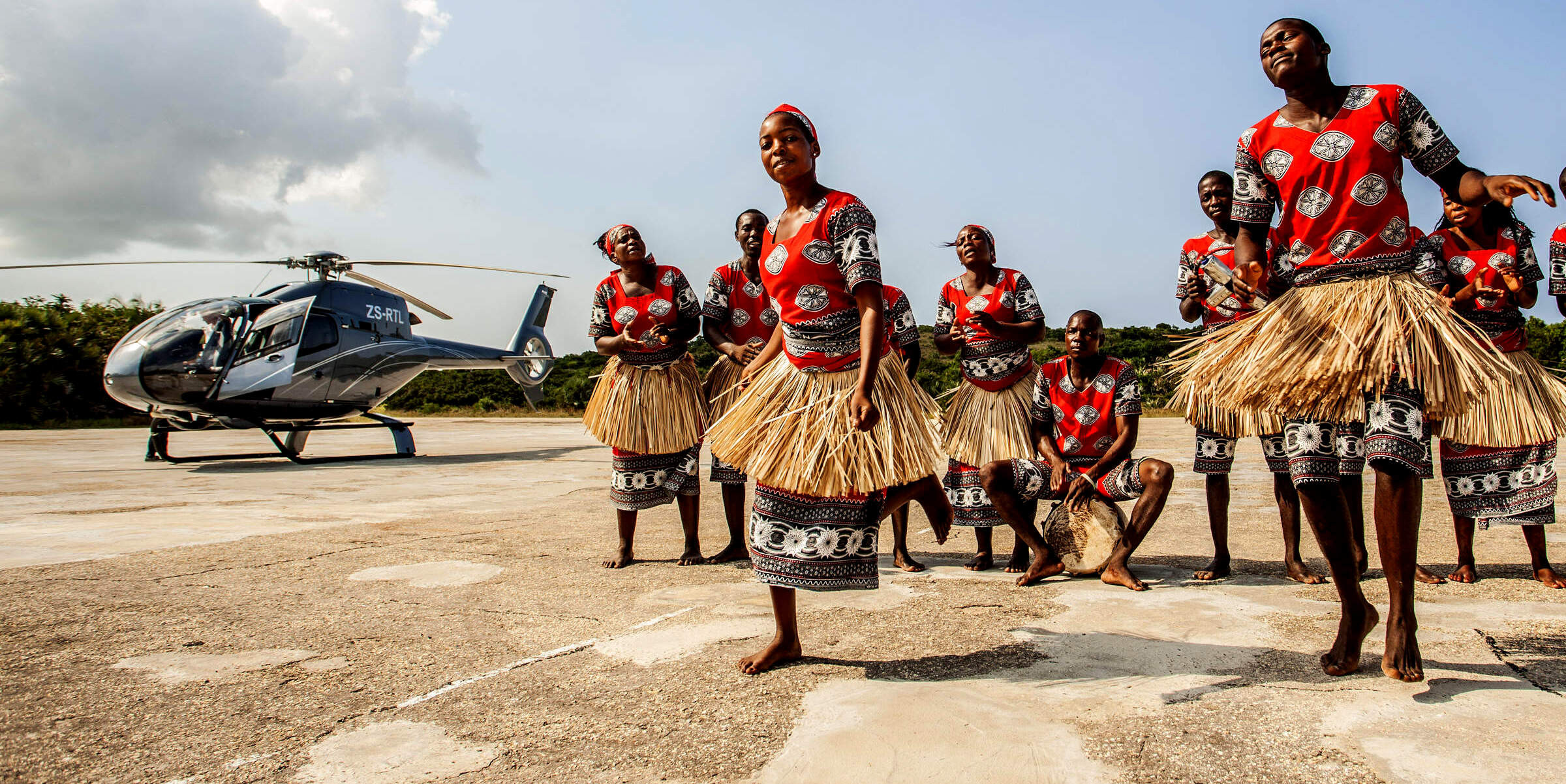
The Maasai Tribe: The Maasai are perhaps the most iconic of Kenya's tribal communities, known for their distinctive customs, dress, and close relationship with nature. Cultural tours to Maasai villages allow visitors to experience traditional Maasai life. These might include:
-
Participation in ceremonies and dances: Visitors can witness and even participate in traditional Maasai dances and singing.
-
Visits to a traditional manyatta (village): Exploring the Maasai's mud and stick homes offers insight into their daily lives.
-
Learning about traditional practices, Such as cattle herding and natural medicine.
The Samburu Tribe: The Samburu, close relatives of the Maasai, reside in the arid regions of northern Kenya. They share similar customs to the Maasai but are distinct in their social structure and rituals. Experiences with the Samburu also offer:
-
Interactive visits: Engage with local warriors and families to understand their pastoral lifestyle.
-
Cultural performances: Enjoy Samburu singing and dancing, which tell stories of the tribe's history and beliefs.
The Swahili People: Along the Kenyan coast, the Swahili people are known for their rich history influenced by Arab, Persian, Indian, and Portuguese traders. Cultural experiences here involve:
-
Exploring historic sites, Such as Fort Jesus and the Old Town of Mombasa, which highlight the historical and cultural fusion that defines the Swahili Coast.
-
Culinary tours: Sample traditional Swahili cuisine, a delicious blend of local ingredients with Middle Eastern and Asian flavors.
The Turkana Tribe: In the remote northwest of Kenya, the Turkana tribe offers a look into a way of life that has remained largely unchanged for centuries. Visits to Turkana communities can include:
-
Understanding nomadic survival: Learn how the Turkana people survive in harsh climates by herding camels and goats.
-
Cultural artifacts: View traditional Turkana crafts, such as basket weaving and beadwork.
Sustainable and Respectful Interactions: Engaging with Kenya's tribal communities is not only about observing but also participating in a manner that respects their traditions and supports their livelihoods. Many cultural tours are designed to be sustainable, ensuring that they provide economic benefits to the communities and promote the preservation of cultural heritage.
Cultural Experiences with Local Tribes in Kenya are profoundly educational and deeply moving, providing visitors with a better understanding of the country's cultural richness and complexities. These experiences foster greater appreciation and respect for the traditions that have shaped the lives of Kenya's indigenous peoples and offer a deeper connection to the vibrant soul of Africa.
Kenya Coast Holidays
Kenya Coast Holidays offer an enchanting combination of breathtaking natural beauty, rich historical heritage, and vibrant cultural experiences, making it a perfect getaway for travelers seeking both relaxation and adventure. The Kenyan coastline stretches over 480 kilometers from the lush, palm-fringed shores of Lamu in the north to the pristine beaches of Diani in the south, each part boasting its own unique charm.
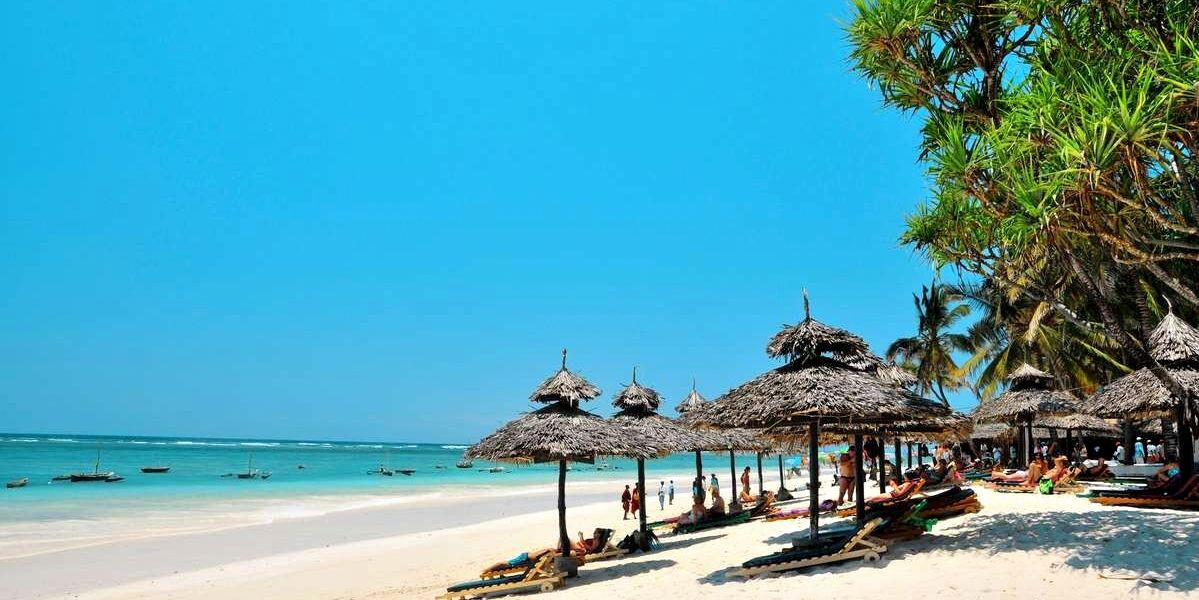
Diverse Coastal Destinations
-
Lamu: This UNESCO World Heritage site is one of the best-preserved Swahili settlements in East Africa, featuring ancient architecture and a unique way of life that has endured for centuries. Visitors can explore the old town's narrow streets, ride on traditional dhows, and enjoy the slow-paced lifestyle that characterizes the area.
-
Mombasa: As Kenya’s oldest and second-largest city, Mombasa offers a lively urban atmosphere with rich cultural diversity. Highlights include touring the historic Fort Jesus, exploring the old town, and enjoying local cuisine at bustling markets and seaside eateries.
-
Malindi and Watamu: These coastal towns are known for their coral reefs and extensive marine reserves, making them ideal for snorkeling and diving. Watamu Marine National Park, in particular, is a conservation area rich in biodiversity.
-
Diani Beach: Famous for its white sandy beaches and luxury resorts, Diani provides a quintessential beach holiday with opportunities for water sports, skydiving, and simply soaking up the sun in a picturesque setting.
Activities and Experiences
-
Water Sports: The Kenyan coast is a haven for water sports enthusiasts. Activities like kite surfing, deep-sea fishing, and scuba diving are readily available and cater to all levels of expertise.
-
Cultural Tours: Engage with the local communities and learn about the Swahili culture that permeates the coast. Visit villages, try traditional Swahili dishes, and participate in local festivals to fully experience the cultural richness.
-
Historical Exploration: The coast is dotted with historical sites that reflect the area’s complex history influenced by Arab, Portuguese, and British settlers. Exploring these sites offers insight into the historical interactions that have shaped the region.
-
Wellness and Relaxation: Many coastal resorts offer wellness retreats that include yoga sessions, spa treatments, and health-oriented menus, all set against the backdrop of the serene Indian Ocean.
Conservation and Sustainability: The Kenyan coast is also a focus for environmental conservation efforts, particularly concerning marine life and coral reefs. Responsible tourism initiatives help to protect this fragile ecosystem while providing educational opportunities for visitors.
Kenya Coast Holidays thus cater to a wide array of interests and desires, from historical and cultural explorations to adventurous water sports and relaxing beach days. Whether you're looking for a family-friendly vacation, a romantic getaway, or a solo adventure, the Kenyan coast offers a diverse range of activities and experiences that promise a memorable and enriching holiday.
Tsavo National Park Safari
Tsavo National Park Safari offers one of the most magnificent wildlife experiences in Kenya. Spread over 13,747 square kilometers, Tsavo is divided into Tsavo East and Tsavo West, making it one of the largest national parks in the world. This vast landscape features a diverse range of ecosystems, from savannahs and riverine forests to rocky ridges and mountainous terrain, providing habitats for a wide array of wildlife.
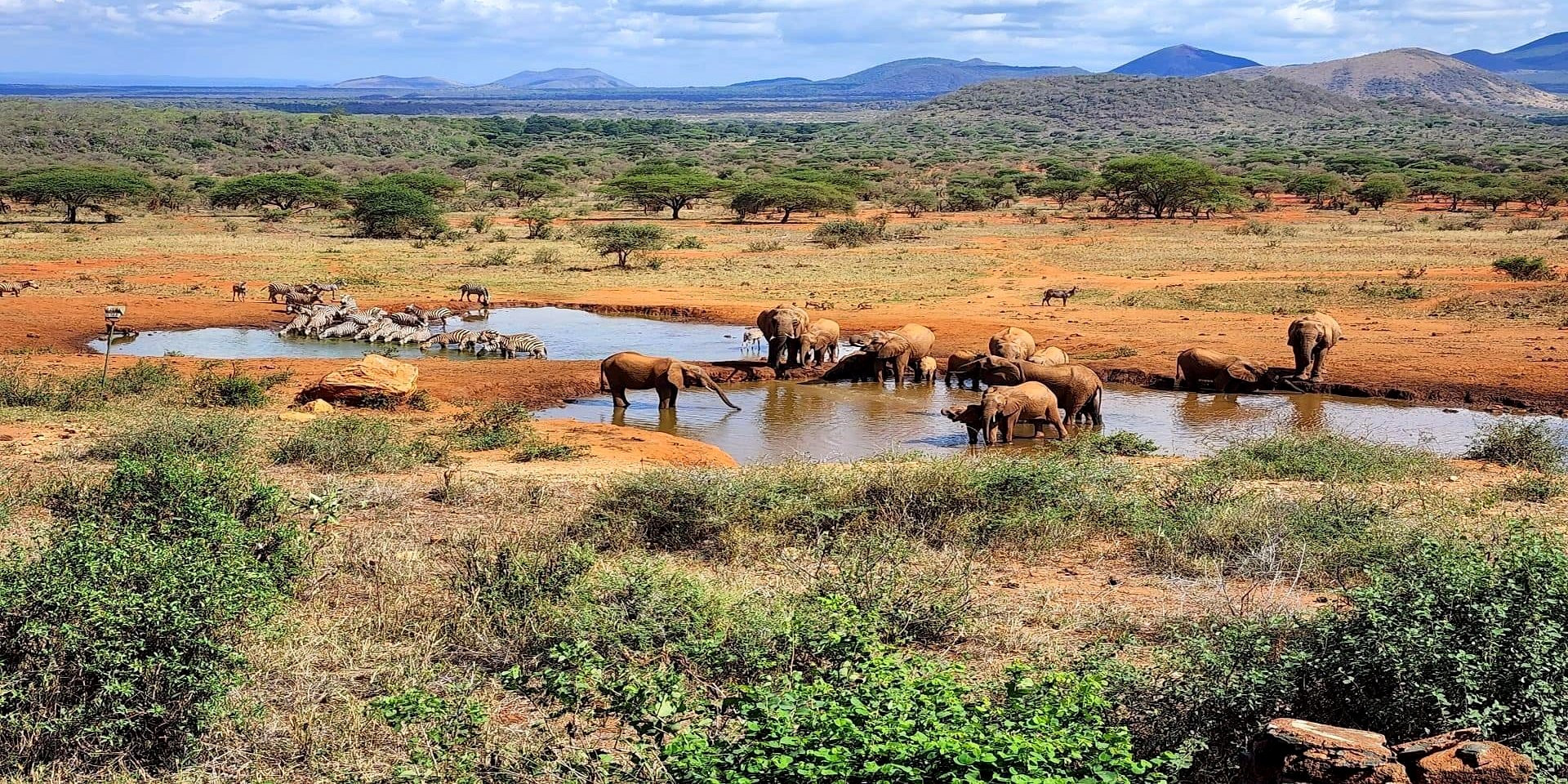
Tsavo East National Park
Tsavo East is famous for its large herds of elephants, which are often seen bathing in the red dust, giving them a distinctive color. The park is generally flatter and drier than its western counterpart, and it's well-known for the Galana River, which meanders through the park. Highlights of Tsavo East include:
-
Lugard Falls, where the Galana River turns into rapids and small waterfalls.
-
Yatta Plateau, the world's longest lava flow.
-
Aruba Dam, a hotspot for wildlife viewing, especially during the dry season as animals gather around this water source.
Tsavo West National Park
Tsavo West offers a more diverse landscape with mountainous terrain, lakes, and springs, providing scenic beauty and rich wildlife sightings. Key features include:
-
Mzima Springs, a series of natural springs with underwater viewing hides for observing hippos and fish.
-
Ngulia Rhino Sanctuary, which protects one of Kenya’s endangered black rhino populations.
-
Shetani Lava Flow, a solidified lava flow that creates a stark and dramatic landscape.
Wildlife and Safari Experiences
Both Tsavo East and West are teeming with wildlife. Besides the iconic red elephants, visitors can expect to see lions, leopards, cheetahs, zebras, giraffes, and a variety of antelope species. The parks also host a rich birdlife, with over 500 species recorded.
Safari goers can enjoy a variety of activities such as:
-
Game drives, which can be conducted in the early morning or late afternoon, when animals are most active.
-
Guided walks with experienced rangers, offering a closer look at the park's flora and fauna.
-
Night drives in Tsavo East, which provide opportunities to see nocturnal animals and predators in action.
Cultural Interactions: Adjacent to the parks, several communities offer cultural experiences where visitors can learn about the local Kamba and Maasai cultures. These interactions often include village tours, traditional dances, and craft markets.
Conservation Efforts: Tsavo's conservation initiatives focus on combating poaching and maintaining the biodiversity of the region. The parks play a crucial role in protecting several endangered species and are central to Kenya’s wildlife conservation efforts.
Tsavo National Park Safari is ideal for those who wish to explore less crowded and more rugged parts of Kenya's wilderness. The vast expanses of Tsavo offer a more secluded and intimate safari experience, making it a must-visit for anyone seeking the beauty and solitude of the African bush.
Tips for Things to do in Kenya
Planning a trip to Kenya can be thrilling, given its rich tapestry of landscapes, wildlife, and cultural experiences. Here are some essential tips to enhance your experience and ensure you get the most out of the diverse activities Kenya has to offer:
Plan According to the Weather
-
Dry Season: The best wildlife viewing is during the dry seasons from June to October and from December to March. This is also an ideal time for beach holidays as the weather is sunny and dry.
-
Wet Season: Traveling during the rainy season (April to May and November) might offer fewer crowds and lower rates, but be prepared for some parks and roads to be less accessible.
Respect Wildlife and Natural Habitats
-
Always maintain a safe and respectful distance from wildlife. Use a good zoom lens to capture close-up photos instead of getting too close.
-
Follow the guidance of your safari guide; they are trained to interpret animal behavior and keep you safe.
-
Stick to designated roads and trails to minimize the impact on natural habitats.
Engage with Local Cultures Respectfully
-
When visiting local communities or participating in cultural tours, dress conservatively and ask for permission before taking photographs of people.
-
It’s appreciated if you learn a few basic phrases in Swahili; simple greetings can go a long way in showing respect and building rapport.
Choose Eco-friendly Tours and Accommodations
-
Support conservation efforts by choosing eco-friendly lodges and tour companies that are involved in sustainable practices and community benefits.
-
Consider contributing to conservation funds or community projects. Even small contributions can make a big difference in conservation and community efforts.
Prepare for Varied Climates
-
Kenya's altitude varies significantly, which can mean a single day may span multiple climate zones. Pack layers for cool mornings and evenings, especially if you're visiting the highlands or climbing Mount Kenya.
-
Use sun protection, including sunscreen, hats, and sunglasses, particularly at high altitudes where the sun can be more intense.
Stay Healthy
-
Consult with a travel health clinic before your trip to get any necessary vaccinations and health advice. Malaria prophylaxis is recommended for most safari areas in Kenya.
-
Drink bottled or purified water and ensure that food is thoroughly cooked to avoid foodborne illnesses.
Know Local Laws and Customs
-
Familiarize yourself with local laws and customs. For instance, plastic bags are banned in Kenya, so bring reusable bags for your shopping and storage needs.
-
Tipping is customary for many services, including guides, drivers, and hospitality staff. It’s a significant part of their income, so keep some cash on hand for tips.
Secure Your Travel Documents
-
Ensure your passport is valid for at least six months after your intended return date, and check if you need a visa to enter Kenya.
-
Keep copies of your important documents, like your passport and insurance, both physically and digitally in case of loss or theft.
By following these tips, your visit to Kenya can be not only enjoyable but also harmonious with the environment and local communities, enriching your travel experience immensely.
Ideal Time for Things to do in Kenya
Dry Season
June to October (Long Dry Season)
-
This is the cooler of the two dry seasons, with clear skies and minimal rainfall.
-
Temperatures are generally mild, although it can be quite cold in the early mornings and evenings, especially at higher altitudes.
-
This season includes the cooler months of June and July, which see daytime temperatures averaging 20-25°C (68-77°F).
December to March (Short Dry Season)
-
Characterized by warmer weather compared to the long dry season, with little to no rainfall.
-
This period is generally hotter, especially in February and March, with daytime temperatures climbing to 25-30°C (77-86°F) in most parts of the country.
Wet Season
November to December (Short Rains)
-
This season features short, intense periods of rainfall, usually in the form of late afternoon or evening showers.
-
Temperatures remain warm but the humidity increases, making it feel hotter than the actual temperatures suggest.
April to May (Long Rains)
-
The long rains bring more sustained periods of rain, with heavy showers that can last several hours, particularly during the afternoons and evenings.
-
Temperatures during this season are cooler than during the short rains, with a more constant cloud cover.
Transition Months
March
-
March is a transitional month that typically marks the end of the dry season and the beginning of the long rains.
-
Weather can be unpredictable this month with increasing cloudiness and humidity as the month progresses.
October
-
October serves as a transition between the long dry season and the onset of the short rains.
-
Early October can still be quite dry, while later in the month, the likelihood of rain increases.
Understanding these seasonal dynamics can help you plan your travel to Kenya, especially if you prefer certain types of weather or wish to avoid the rainier months. Each season offers its unique atmosphere and can significantly affect travel plans and activities.
From awe-inspiring animal safarazasara throughout the Maasai Mara and tranquil escapes on untouched beaches to difficult hikes up Mount Kenya and vibrant cultural contacts with many indigenous tribes, Kenya is a dynamic location that has something for every visitor. Every activity and location has distinct appeal and features, so visitors may experience a mix of cultural immersion, leisure, and exploration. Organizing your trip based on the seasonal changes will improve your enjoyment and enable you to completely appreciate the natural beauty and ancient customs of Kenya. Whether seeking adventure or relaxation, Kenya promises an unforgettable journey filled with lasting memories.
FAQs for Things to do in Kenya
Q: What is the best time to visit Kenya for wildlife safaris?
A: The best time for wildlife safaris is during the dry seasons, from June to October and December to March, when animals are easier to spot as they gather around water sources.
Q: Can I see the Great Migration all year round?
A: No, the best time to witness the Great Migration is from July to October when millions of wildebeest, zebras, and gazelles move across the Maasai Mara in search of greener pastures.
Q: What are the top activities to do in Kenya besides safaris?
A: Beyond safaris, popular activities include climbing Mount Kenya, relaxing at Diani Beach, bird watching at Lake Nakuru, engaging in cultural tours with local tribes, and exploring historic sites along the coast.
Q: Is it safe to travel in Kenya?
A: Yes, Kenya is generally safe for tourists, especially in popular tourist areas and when traveling with reputable tour operators. However, visitors should always take standard safety precautions and stay informed about local conditions.
Q: Do I need any vaccinations before traveling to Kenya?
A: Yes, certain vaccinations are recommended or required for Kenya, including Yellow Fever and Hepatitis A. Malaria prophylaxis is also recommended for travel to certain regions. Always check with a healthcare provider well in advance of your trip.
Q: What should I pack for a trip to Kenya?
A: Pack light, breathable clothing for safaris, along with a sturdy pair of walking shoes. Include a mix of layers for varying temperatures, especially if visiting both coastal and mountainous regions. Don’t forget a hat, sunscreen, and insect repellent.
Q: How can I respect local customs and traditions during my visit?
A: Show respect by dressing modestly, asking permission before taking photographs of people, and engaging with local cultures in a sensitive and informed manner. Learning a few basic phrases in Swahili can also be appreciated.
Q: Are there opportunities for eco-friendly travel in Kenya?
A: Yes, many lodges, tours, and parks emphasize conservation and sustainability. Choose eco-friendly accommodations and tour operators that support environmental initiatives and community projects.
Q: What currency is used in Kenya?
A: The Kenyan Shilling (KES) is the currency used. Credit cards are widely accepted in major cities and tourist locations, but cash is king in remote areas.
Q: Can I use my cell phone in Kenya?
A: Yes, mobile networks cover most urban and many rural areas. It's often more economical to buy a local SIM card with a data plan.
For the Nepal tour, please click here.
If you are looking for different kinds of Nepal Tours or Trekking Packages, feel free to contact us.
